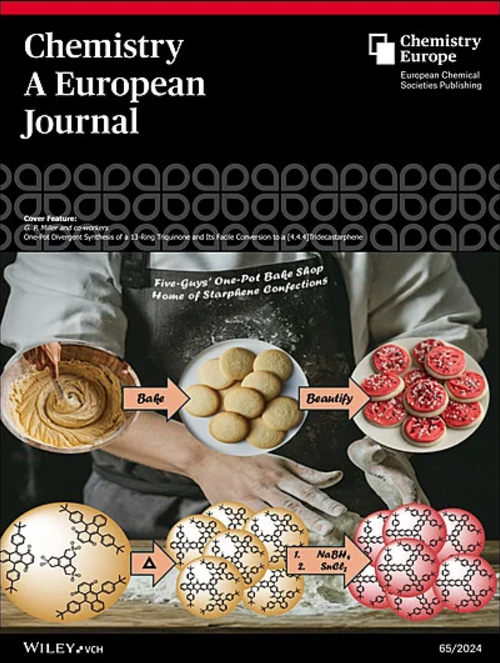基于mattson同源的高取代四氢呋喃立体选择性合成。
IF 3.7
2区 化学
Q2 CHEMISTRY, MULTIDISCIPLINARY
引用次数: 0
摘要
去质子化三甲基硅基乙醇是一种极好的亲核试剂。在通常的碱性反应条件下,产物稳定,产率高。经过两个进一步的同源化步骤,保护基团通过六元环O-B配位自动断开,提供高取代的四氢呋喃。本文章由计算机程序翻译,如有差异,请以英文原文为准。

Stereoselective Syntheses of Highly Substituted Tetrahydrofurans based on Matteson Homologations
Deprotonated trimethylsilylethanol is an excellent nucleophile for Matteson homologations. It can be introduced in high yields and the products are stable under the usual basic reaction conditions. After two further homologation steps, the protective group is automatically cleaved off via a six-membered ring O-B coordination, providing highly substituted tetrahydrofurans.
求助全文
通过发布文献求助,成功后即可免费获取论文全文。
去求助
来源期刊

Chemistry - A European Journal
化学-化学综合
CiteScore
7.90
自引率
4.70%
发文量
1808
审稿时长
1.8 months
期刊介绍:
Chemistry—A European Journal is a truly international journal with top quality contributions (2018 ISI Impact Factor: 5.16). It publishes a wide range of outstanding Reviews, Minireviews, Concepts, Full Papers, and Communications from all areas of chemistry and related fields.
Based in Europe Chemistry—A European Journal provides an excellent platform for increasing the visibility of European chemistry as well as for featuring the best research from authors from around the world.
All manuscripts are peer-reviewed, and electronic processing ensures accurate reproduction of text and data, plus short publication times.
The Concepts section provides nonspecialist readers with a useful conceptual guide to unfamiliar areas and experts with new angles on familiar problems.
Chemistry—A European Journal is published on behalf of ChemPubSoc Europe, a group of 16 national chemical societies from within Europe, and supported by the Asian Chemical Editorial Societies. The ChemPubSoc Europe family comprises: Angewandte Chemie, Chemistry—A European Journal, European Journal of Organic Chemistry, European Journal of Inorganic Chemistry, ChemPhysChem, ChemBioChem, ChemMedChem, ChemCatChem, ChemSusChem, ChemPlusChem, ChemElectroChem, and ChemistryOpen.
 求助内容:
求助内容: 应助结果提醒方式:
应助结果提醒方式:


